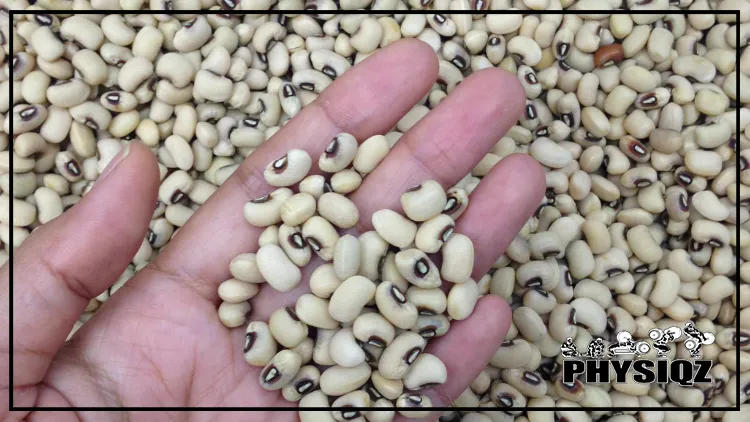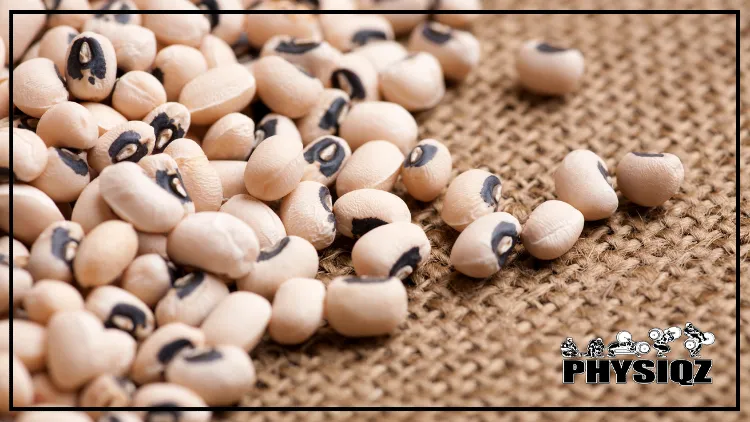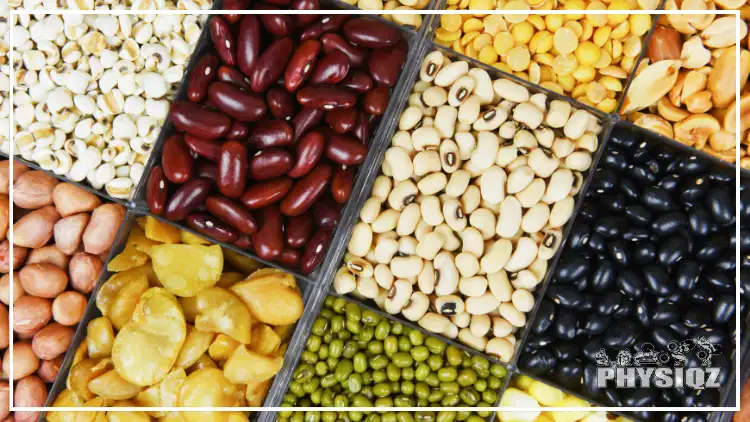
Black eyed peas are known for being very nutritious, but those on one of many trending diets like the keto diet might find themselves wondering if black-eyed peas fit within their carb limits.1 Additionally, they may look for ways to incorporate this nutrient dense food while remaining under the 50 grams of carbohydrates allotment per day.2
As many low carb dieters are already aware, it can be difficult to meal plan and maintain a low carb lifestyle. So not only will keto readers learn whether or not black eyed peas keto, but also how to incorporate them into their diet and which alternatives can be used to reduce a person’s net carbohydrates.
Amount of Carbs in Black Eyed Peas + Net Carbs in Black Eyed Peas
Black eyed peas are filled with complex carbohydrates that are healthy for the body due to their nutrient dense makeup. But while black eyes may add essential vitamins and minerals to one’s diet, they come at a hefty price of net carbohydrates per serving.

Source: alejandrophotography via Canva.com3
A standard one cup serving size of black eyed peas provides roughly 35.6 net grams of carbohydrates.4 To break things down further, about 11.1 grams of these carbs consist of fiber, which is indigestible and cannot be broken down by the body. Additionally, there are 5.6 grams of sugars per one cup serving size of black eyed peas.
Therefore, the amount of carbohydrates in black eyed peas is on the high side. With this in mind, they may not be suitable for a keto diet.
Do Black-Eyed Peas Have Low Carbohydrates? Do Black-Eyed Peas Fit into a Keto Diet?
Black-eyed peas are not considered keto-friendly or low in carbohydrates according to keto standards. Let’s take a look as to why.
In order for the body to enter into ketosis and start burning stored fats instead of stored carbohydrates, a person needs to eat less than 50 grams of carbs per day. This amount may vary depending on height, weight, and sex, but 50 grams is considered the set standard for a keto diet.
If a person attempting a keto lifestyle were to eat a full cup serving size of black eyed peas, then they would be very close to their daily carbs allotment and would only have roughly 14 net carbs remaining for the rest of the day. This causes a few problems and is not very feasible for keto dieters to successfully do.
With only 14 grams of carbs remaining, keto dieters might struggle with meal planning since many foods contribute at least a little bit to a person’s daily net carbohydrates. This also limits the amount of fruits and vegetables a keto dieter can enjoy, which are important for providing the body with essential amino acids, vitamins, and minerals required for overall health.
So while one serving of black eyed peas by itself will not send a keto dieter over their carbohydrate allowance for the day, it puts them dangerously close! So with this information in mind, black eyed peas should not be considered keto friendly nor keto approved.
Do Black-Eyed Peas Qualify as Keto in Small Portions? Is It Acceptable To Include Black-Eyed Peas in a Keto Diet?
Black eyed peas should not be eaten by keto dieters if they wish to stay in ketosis. Or at the very least, black eyed peas should not make up a large portion of a keto dieter’s meal. That being said, there are a couple of tips and tricks that make enjoying black eyes feasible for low in carbohydrate diet plans.
Firstly, portion control is a great strategy that many keto dieters are likely familiar with. Eating a smaller serving size of something that is high in carbohydrates can help fit certain foods into any diet plan. That way, keto dieters can still enjoy the taste of black eyed peas while maintaining their low carb status.
Additionally, keto dieters can still enjoy a very small portion of a high in carbohydrate food such as black eyed peas by mixing them into a low in carbohydrate black eyed pea alternative seen below. This way, a recipe for a dish that requires black eyes as an ingredient can maintain the flavor while still remaining low in carbohydrates.
A lesser known tool for keto dieters to maintain their low carb status is using the glycemic index. This index is used to assign various foods a number depending on how much it can raise blood glucose levels, or more simply put, how many carbohydrates a food contains.5
Essentially, the higher the glycemic index, the more keto dieters should avoid that food. This is an easy to use tool for low carb dieters to reference during their meal planning and can help many dieters to adhere to their ketogenic diet. In fact, knowing the glycemic index can even help dieters to lose weight without trying and clarify whether black-eyed peas are suitable for a keto diet.
Finally, keto dieters are encouraged to use meal planning to ensure they stay on track for under 50 grams of carbohydrates per day. Meal planning also allows dieters to know their portion sizes prior to eating and helps them to anticipate the amount of carbohydrates they have throughout the day. All in all, this strategy is important for keto diet adherence.
Are Beans Compatible With the Keto Diet? Is It Permissible To Consume Beans While on the Keto Diet?
While the answer to are black eyed peas is no, ketogenic dieters might wonder what about all the other types of beans. Beans on a keto diet can be tricky, but some varieties are more keto-friendly than others.
Well, this is tricky to answer because there are so many types of beans out there! Black beans, green beans, lima beans, and legumes. All types of beans contain a varying amount of net carbohydrates, so the answer truly does depend on the type of bean being enjoyed.
Keto dieters are encouraged to check out the list below to learn the amount of net carbohydrates of various types of beans and if said beans are keto friendly. There is also a comprehensive list of low in carbohydrate black eyed peas alternatives that can satisfy cravings but maintain a keto dieters low carb status.
Do Black Beans Fit Into the Keto Diet?
Black beans are a staple for not only many dishes, but for many different cultures as well. They are packed with complex carbs and important nutrients for the body and can aid in overall general health and weight loss. But due to their high in carbohydrate consistency, black beans are not considered to be keto approved. In fact, a 1 cup serving of black beans yields 40 grams of net carbohydrates.6 Keto dieters wanting to incorporate black beans should aim to use portion control and attempt to mix this food into other ingredients that are well known for being low in carbohydrates.
Are Green, Black, Pinto, Kidney, Lima, or Soy Beans Keto Friendly?
To quickly answer the question, are green, black, pinto, kidney, lima, or soy beans keto friendly, the answer is it depends. Some foods like soybeans, or otherwise known as edamame, and green beans, are low in carbohydrates and keto approved.
Other types of beans such as the black, pinto, and kidney bean varieties are high in carbs and should be avoided at all costs. To make matters more confusing, there are even some beans which are in between in carbohydrate content.
The sheer variety that beans come in makes it very tricky for keto dieters to know for sure if their bean of choice is low carb approved.
So while black-eyed peas may not be keto-friendly, let’s take a more detailed look at the many other types of beans. Check out the list below to learn more about the net carbohydrate content for the wide variety of beans commonly used around the world.
Green Beans: Green beans are a keto friendly option because they contain a mere 7 grams of net carbohydrates per serving size of 1 cup.7 Of the 7 grams of net carbohydrates, 3 grams consist of fiber and 3 grams consist of sugar. Furthermore, green beans are healthy and full of nutrition, making them the perfect low in carbohydrate option! So if you’re tired of being fat, then incorporating this superfood is a great way for healthy weight loss.
Black Beans: Black beans may be alright for keto dieters in moderation, but with 40 grams of net carbohydrates per serving size of 1 cup, this food is not considered to be keto friendly. In fact, low carb dieters should be very cautious around this ingredient and make sure to only eat a small portion if any at all. Better yet, keto dieters can swap this ingredient with a lower carb option listed below.
Pinto Beans: Pinto beans are high in protein and complex carbohydrates, making them a healthy option for the average person. However, pinto beans are very similar to black beans and are extremely high in the amount of carbs per serving. Coming in at approximately 45 grams of net carbs per 1 cup serving size, pinto beans should probably be avoided by ketoers everywhere.8
Kidney Beans: Another high in carbohydrate food item that keto dieters should avoid if they are able to. A 1 cup serving size of red kidney beans has 113 grams of net carbohydrates.9 Furthermore, this nutrient dense food is high in calories, coming in at a total of 620 cals per serving. This is not ideal for those concerned with getting skinny fast, so all types of dieters should beware!
Lima Beans: Lima beans are tricky. There are 32 grams of net carbs per 1 cup serving size, making this bean okay for keto dieters when using meal planning and portion control strategies.10 However, low in carb diets should be aware of how the lima beans are cooked and the other ingredients accompanying a lima bean inclusive meal.
Soy Beans: Soy beans are known for being high in protein and low in carbohydrates! A one cup serving size of soybeans contains only 6 grams of net carbohydrates making it a keto friendly low carb option.11 Due to its high protein content, soybeans are a great source to help dieters lose fat faster plus build and harden muscles.
Black Eyed Peas Keto Alternatives
Keto dieters should not waste time worrying about the amount of carbohydrates in black eyed peas since there are a number of low in carbohydrate alternatives out there. Check out the list below for a comprehensive record of foods that can turn any high carb recipe into a keto friendly one.

Source: Bigc Studio via Canva.com12
As an additional bonus, many of these low in carb foods are also low in calories too. So dieters who have fears of not losing weight can benefit from incorporating the foods named below to aid in successful and maintainable long term weight loss.
- Green Beans
- Soybeans/Edamame
- Chickpeas
- Mushrooms
- Cauliflower
- Peas
- Broccoli
- Bell Peppers
- Zucchini
- Squash
Black eyed peas may be delicious, but can come with a hefty amount of carbohydrates per serving. So while black-eyed peas may not be keto-friendly, there are still a number of strategies keto dieters can use to still enjoy this food, as well as dietary alternatives that are low in carbohydrates and keto approved.
References
1bebuntoon. Canva. Accessed 13 April 2023. <https://www.canva.com/photos/MAEQcl1wI-c-hand-holding-black-eyed-peas/>
2Harvard T. H. Chan School of Public Health. 2022. Ketogenic Diet For Weight Loss. Harvard. Web. Retrieved on 07 November 2022. <https://www.hsph.harvard.edu/nutritionsource/healthy-weight/diet-reviews/ketogenic-diet/>
3alejandrophotography. Canva. Accessed 13 April 2023. <https://www.canva.com/photos/MAED789ISsE-black-eyed-peas/>
4Food Data Central of National Agricultural Library. 2019. Food Data Cowpeas, Common. U.S. Department of Agriculture. Web. Retrieved on 07 November 2022. <https://fdc.nal.usda.gov/fdc-app.html#/food-details/173759/nutrients>
5Harvard Health Publishing. 2021. Glycemic Index for 60+ Foods. Harvard Medical School. Web. Retrieved on 07 November 2022. <https://www.health.harvard.edu/diseases-and-conditions/glycemic-index-and-glycemic-load-for-100-foods>
6Food Data Central of National Agricultural Library. 2019. Food Data Black Beans. U.S. Department of Agriculture. Web. Retrieved on 07 November 2022. <https://fdc.nal.usda.gov/fdc-app.html#/food-details/626716/nutrients>
7Food Data Central of National Agricultural Library. 2019. Food Data Green Beans, Raw. U.S. Department of Agriculture. Web. Retrieved on 07 November 2022. <https://fdc.nal.usda.gov/fdc-app.html#/food-details/1103337/nutrients>
8Food Data Central of National Agricultural Library. 2019. Food Data Beans, Pinto, Mature Seeds, Cooked, Broiled, Without Salt. U.S. Department of Agriculture. Web. Retrieved on 07 November 2022. <https://fdc.nal.usda.gov/fdc-app.html#/food-details/175200/nutrients>
9Food Data Central of National Agricultural Library. 2019. Food Data Lima Beans, Immature Seeds, Raw. U.S. Department of Agriculture. Web. Retrieved on 07 November 2022. <https://fdc.nal.usda.gov/fdc-app.html#/food-details/173744/nutrients>
10Food Data Central of National Agricultural Library. 2019. Food Data Beans, Kidney, Red, Mature Seeds, Raw. U.S. Department of Agriculture. Web. Retrieved on 07 November 2022. <https://fdc.nal.usda.gov/fdc-app.html#/food-details/168396/nutrients>
11Food Data Central of National Agricultural Library. 2019. Food Data Soybeans, Mature Seeds, Sprouted, Cooked, Steamed. U.S. Department of Agriculture. Web. Retrieved on 07 November 2022. <https://fdc.nal.usda.gov/fdc-app.html#/food-details/168460/nutrients>
12Bigc Studio. Canva. Accessed 13 April 2023. <https://www.canva.com/photos/MADp1OMAfYA-differemt-types-of-beans/>